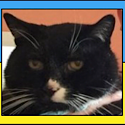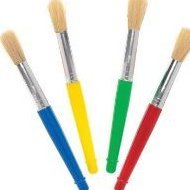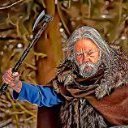Leaderboard
Popular Content
Showing content with the highest reputation on 12/05/22 in all areas
-
A half of the Hurristory kit (the 2nd half is waiting for Royal Yugoslav decals). This Hurricane Mk.I was flown by a SAAF ace John Frost, No. 3. squadron in Abyssinia, spring 1941. Built straight from the box including the tiny photo etched parts, painted with Gunze paints and varnishes. The aerial is Uschi "Fine" thread.22 points
-
The Admiral, Christopher Brown of HPM Models and I have been working on this and now we have a prototype. It will be test fitted into an Academy kit, any corrections made and put into production. You can see the new nacelle and cowling are only a little bit larger than the Academy offering but I think it will make a substantial difference to the appearance. The upgrade will consist of nacelles, cowlings, cowling fronts, engines, propellers, exhausts and intakes. The easiest way to determine when it is available is to sign up for the Red Roo newsletter from our web site. Alternatively, PM me your email address and I will put you on a list. Edit - I have sent a PM to everyone who responded, except two members without mailboxes @Wm Blecky and @J.C. Bahr , to draw attention to this update. We haven't determined a price yet, but we don't think it will be that expensive, by current resin casting costs. Anyway, there is no compulsion to purchase before you have seen the price. We ship overseas and charge postage at Australia Post costs.17 points
-
So far a headache, sore throat, and slight nasal drain. I had thought it was allergies from the high pollen count yesterday, but I felt pretty dire this morning (not helped by Winston waking us up between 1AM-3AM last night complaining his "penis felt weird" -- not hurt, mind you, just weird -- and then went through a series of other complaints that only a very exhausted little child unaware of how close his mother and father have inched towards the precipice of strangling him can. You're not gonna be that lucky. Thanks! I'm hopeful, as I've done all the stuff one's supposed to as well as lost a great deal of weight, hopefully getting me out of the Danger Zone. Mine is more or less manifested fully in my daily life. My sister does. They are are very strange person. I generally describe them to others as being like a smaller, smarter, but much, much meaner me. I shall never forget driving 300 miles to visit them at college, where they were having a rough time, and being introduced to their sorors with "this is my brother, he has bigger breasts." I've remarked before, I think, on my occasional desire to quietly have all of my atoms travel in different directions at the speed of light, and this was one of those. Great pie, though! Anyway, the first part of the day was pretty rough, as the boys knew I was weakened and were at their worst, but then good news(?) Mrs P tested positive as well, and was sent home from work and since she's pregnant, prescribed Remdesivir, just like major elected officials. So I had support and could pass out for a few hours. Anyway, tonight I did a teeny-tiny bit to keep my hand in: I sprayed the RLM 24 Reichsverteidigung on the JG54 machine (though at current speed, it will be painted long before my decals get here from fair Poland). This was my first time using Mr Paint/MRP, and it seemed pretty nice! It was pre-thinned and dried quickly, but of course who knows what I'll come down to tomorrow. I then masked it and painted the bulk of the aircraft Colourcoats RLM76, which is a beautiful pale blue shade that I have a hard time seeing against the Mr Surfacer. It went on very nicely, as it always does: PXL_20220512_014433682 by Edward IX, on Flickr I'll let it dry overnight before moving on to the top coat. Apparently there's been a few developments since the last time I painted a late-war Luftwaffe aircraft (a Ta152 in...gosh, I don't even remember when...2016 sometime?), so while my JG54 190D will use Colourcoats, I have a small packet of AK "Real" Colours (as opposed to all those other colours which exist only in our imaginations) based on the research in their very expensive book on WWII aircraft paint schemes, I'll be using the AK paints for the scheme on the second aircraft, which has the greenish RLM76 that looks like Sky, and one of what are apparently three shades of RLM81 along with RLM82 up top. The Colourcoats aircraft will just be their RLM76/82/83, what everyone believed was RLM83 apparently actually an RLM81 variant. Confusing! This is why you don't lose a war, the paperwork is murder. Anyhoo, for the JG26 aircraft, I just used Gunze lacquers to paint its white/black Reichsverteidigung. PXL_20220512_014406632 by Edward IX, on Flickr Initially, I painted the white/black demarcation on a panel line, but closer inspection revealed this was incorrect, and I masked a bit and resprayed. PXL_20220512_014732253 by Edward IX, on Flickr Anyway, I can feel myself growing faint. Off to change the laundry and then read in bed until I pass out.15 points
-
Hi all This is Eduard's 'problematic' 1/48 D-9 kit. Fortunately, this is my last one I have, so I don't have to build any more of them . Finished in the markings of 'Black 12' 500658 from KG(J) 27 - an ex Bomber unit whose pilots were re-mustered into a fighter wing at the end of the war. According to records, this aircraft was lost in combat with P-51s on 1st April 1945. No photos exist of 500658, but I've tried to model it on other D-9s from the 500 series, and there is evidence of the green/white checker band on other KG(J) 27 aircraft, including 109s and 190As. Painted with a mix of Vallejo and Mig, using some old Montex masks from the spares box and kit decals for the octane and glycol stencils. Painting/masking the checker strip was fun! Anyway, hope you like the pics..14 points
-
I managed to complete this one a couple of weeks ago but just realised I never post it up as complete on here This aircraft is quite a controversial one because of it's paint scheme. The aircraft in question was flown by the 5th Sentai out of Kiyoshu Airfield and belonged to Maj Yoshiaki Yamashita. It was stripped of it's factory night paint scheme on the upper surfaces but retained the paint on it's underside, control surfaces and the engine cowls & faring's. This was done to try and raise the performance of high altitude interception of B-29's but was not approve by higher command. There are a only 3 photo's of the machine that I know of but the main one you will mostly see is this one (Credit to the owner of the original photo) In the Hasagawa boxing of the Kai Tei of the 5th flight regiment this paint scheme is supplied but they show the upper wings being brown, the rudder as red as well as the nosecap. After speaking to Nick Millman we both agree that this was not the case. I have painted the model in the best interpretation we could come up with. The model is painted using SMS paints, the metallic's being a mix of Super Silver & Stainless Steel with Steel being applied on the darker upper areas. The underside is a custom colour to make the Japanese night black brown colour. All markings were painted on accept for the tail insignia & text as well as the odd stencil here and there. Weathering was done with Tamiya panel liner & some pigments. I was also lucky enough to take home Gold in the 1/72 Out of Box category with this one at the recent local model show which I was pretty happy about Hope you like it!13 points
-
This was a kit that at the early stages looked like being a bit of a flop if I'm honest. There were parts missing, it was way different from the first B-25 I made (Tee-Kay), and as time went on it didnt get that much better😳; I found that the main wheels were too small, not only that, the main legs were too short! No matter how much nose weight I fitted it was just gonna tail sit. I didnt hold much for it after building the Italeri version but its now shed its 'ugly duckling' looks and become something quite special! I fitted it with larger (more correct sized) wheels, and added a 2mm height extension in the main landing legs; that did it!😀 You may remember in the WIP that it was supposed to have been painted in colours and markings of the 1st Air Commando in India depicted with its forward pointing white stripes on the fuselage, but the decals weren't much use as its not a new kit. Mine is painted in Colourcoats Olive Drab 41 above and Colourcoats Neutral Grey on the undersides, and I applied decals from an aftermarket set I bought specially. These ones, (the top set). Once its 'posture' had been addressed, it was well on the way to becoming a very good model. I will NOT throw a model away if its mostly built, even if it has issues that seem insurmountable, I'd rather put it aside, think about it, get advice, opinions from others because really I WANT it to work out. I'm in no hurry now and in fact the more relaxed view helps alot because it allows time to develop ideas! I started the decals yesterday but I ran out of steam when I got to the ones on the nose; I knew that the dragons head would be an awkward pair of decals, and once again Decal set and Decal sol performed admirably, but still required some patience. I had fitted the underwing decal on the wrong wing but luckily I had a replacement, and then one on the port side at the waist went a bit 'south', and this gave me a little extra work to correct in both cases. I couldn't fit the rest of the nose decals until the dragons head was on and happy, it's three different decals rather than one larger one. I knew if I could get both halves of the dragons head at the same height I could match up things like the red outline around the mouth, as it was there was some vertical overlapping and a tiny area of the nose uncovered, which I very carefully painted in AFTER I'd varnished all decals with Klear. I'm VERY pleased at how this one has worked out, I stuck with it and its turned out rather nicely; and I still have a third B-25 to make, this one will have a glazed nose, a C or D model, the Airfix one. I don't know if it will be my next build or if I'll take a break and do a smaller one this time! I'll be sure to let y'all know! So, here are the pictures of the final outcome! I proudly present.... I'm really pleased at how these engines have turned out! I again added the exhaust trails using lead scraped from a pencil, I tried dusting it on with a brush but it didnt work out (I couldn't see it!) so I reverted back to my original Mk. 1 finger and smeared it on and rubbed it back wards. This always looks great on a B-25!😀 I bent two little bits of wire to fit around the engine bell on both engines. I also added some smudging around the cheek guns and nose guns; not too much though, didnt want to spoil the overall look of the model! The decals on the tail I carefully positioned so that I didnt cut through a digit when bedding them in. A little Humbrol 155 (olive drab) on the canvas skirt around the tail guns! Make it look like 'army' canvas. Again, I have pencilled-in the panel lines. I'm very pleased this turned out as well as it did. I wanted three different types of B-25 (there were hundreds of different versions. and the next one will be a C or a D version with the glazed nose. I'll need to find it a space in the cabinet now!🙄13 points
-
Thanks Bob The aim is for muted worn colours And after about 15 coats of Alclad with sanding down between using Micromesh cloths, I'm going to settle for this Thanks for looking Rob10 points
-
Hi all, Following on from my current Royal Navy theme spanning from the 1960's to present day Fleet Air Arm, here's a few of my latest builds from early April and May. First up is Italeri's 1/72 Westland Wessex HAS.3 kit, built as a HAS.1 as best as reasonably possible. The HAS.1 nose intake was created using some Eduard mesh and flipping the HAS.3 intake cover upside down within the nose. It's basic, but creates a more realistic rendition. The kit uses Modeldecals decals from sheet 99 and represents XS887 from HMS Heron flight, Yeovilton. The eagle eyed among you will note that this frame never war the number 266, but sadly this is all I had available at the time of build. Second is the lovely Airfix 1/72 Buccaneer S2.C, built from the box with the except of an Eduard wheel set, Quickboost Air Intake covers and a set of photo etch steps I think from Brengun? Last up is the Trumpeter 1/72 Fairey Gannet AS MK1/4 - not my best kit and despite filling the nose with some serious weight, she is still a tail sitter. I also had a few issues with the decals, general fit of the canopy and some of the weathering stuck to the uncured gloss coat a little too much, but the end result is good enough. None of the builds are 100% accurate, they're also missing some aerials and bits from where the carpet monster came alive during the builds. Anyway, many thanks for looking and onto the next build!10 points
-
Hi all, I just finished this for Big and British GB. I've always liked the peculiar shape of the cab and the general "impressiveness" of these big Scammells. You know I like to civilianize my trucks and this time my eye fell on a restored version in black and yellow. WIP can be found here: I liked the build, these IBG kits are very good value for money. I've built several of their small scale trucks, which are always nice, and this build was my first of their 1/35 scale offerings. I have this same kit in 1/72 so that will be fun to build at some point. I did no detailing, though there's certainly room for it. I just wanted a good looking Scammell in my cabinet 🙂 Paints are Tamiya's X-8 Lemon Yellow and Semi Gloss Black for the chassis. Rubber Black for the tyres, Medium Grey for the interior. Some Vallejo paints here and there. The above pictures were taken later, after I located decals for it. They were in an unexpected place, they're leftovers from the Emhar Bedford Wrecker and are perfect for this build. The rest of the pictures are sans decals. Thanks for watching!9 points
-
First post in here folks. Still getting my techniques down and experimenting with the panel line/varnish/oils weathering etc. Just got back into modeling in the last 3 years or so, very much still learning. I will put up some of my work of the last few years for feedback.9 points
-
MEMORANDUM To m'learned friend Steve I write with reference to this picture. And its associated correspondence, viz making the Miniature Detonating Cord stick invisibly inside a moulded canopy. Stickers No doubt you and the rest of the world have seen if not used self adhesive decals, possibly even to put a sticker onto the bodywork of a motor car or motor cycle. You remove a protective layer and slap the sticker straight where you want it, hopefully not placing it upside down or over an essential access panel. I am postulating you making your own version of the self -adhesive MDC in the same way those stickers are invariably made. The adhesive never flows round the stuck item (unless the item shrinks in size and leaves a sticky film) and is usually invisible. In an early life, as I believe I have mentioned, I was apprenticed as a silk-screen printer at a firm in Birmingham that made transfers for all sorts of applications. "Tell the world who made it" we proclaimed. Some water slide ones were used in Stoke-On-Trent for decorating expensive pottery, others were used for company logos and other applications for product images. We made millions of them. And we also made self-adhesive stickers, I had lots of them all over my bedroom stuck to the walls and furniture, an untidy chap then too Lots of motor cycle stickers, Yamaha, Suzuki and BSA made for the accessory business and MILK stickers for the sides and fronts of milk floats and Milk vending machines. The point of this is this. The self adhesive glue used was made by Evode, yes EvoStick and was or seemed to be ordinary EvoStick which we had to thin down to put in the screen printing machine with white spirits. It arrived in one gallon cans which had an inner metal seal for safety, it was stirred with white spirits until it became slightly (OK VERY) wet enough to drop into the screen reservoir. Silk screened thinly onto the back of the decal after all the other things had been printed it was allowed to go away and dry in huge racks and afterwards was given an interleaving sheet to stop the prints sticking to the layer above, usually a layer of waxed paper the Evode wouldn't be able to stick to. Now I am wondering if by experimentation you could make such a mix, Evostick and white spirit and after putting it on the printed MDC wet and letting it dry you might have one-shot stick on MDC. It's obvious that Eduard use similar technolgy for their self adhesive kit innards and the like and I think Yorkshire Law could use it too. Just a few thoughts from an overwrought brain this morning, white spirits only not turpentine substitute 'cos it might not work as well. When dry you won't see a glue film. Honest.8 points
-
Now I have the engines and carbs printed, it's time to start on fitting the engines into the chassis. The engines have plates bolted to each side to allow for fixing, like this... Except, of course, for the rear right hand mount which supports the handbrake and gear-change cross shafts and is like this🙃 The engines have a variety of supports. The rear of the rear engine is supported on hangars to the top of the chassis, and in my ignorance I supposed that all the supports were like that... no chance! There's an angle across the chassis between the engines that the front engine hangs off. Added to that the front of the rear engine hangs off the front engine by a couple of steel straps. The front engine is offset from the rear, presumably to align the chain. With me so far? more pics,,, Making the carbs was important to align the front engine as the inlet protrudes through the bodywork, so it needs to be outside the chassis. Bolster had a problem with keeping the engines in sync, and originally used a jockey wheel to keep the chain taut between the two motors. A friend of his came up with an ingenious way of adjusting the front engine to keep the chain tight without the power sapping jockey wheel. There are no details... From the photos I have, I think it works like this. There are two adjustable rods from the front engine to the front chassis rail. When these are tightened up, the front engine pivots on it's rear mount and tightens the chain, as the sprocket moves forward. The chain. I found that the easiest way to join a short chain was to cut down a spare jig (you get heaps) otherwise the chain has a mind of it's own I think that the chain is about right in pitch, but it's way too wide. I'm happy to live with that, when the body is on it will be difficult to see. A couple more views from underneath Next will be to sort out the gearbox mount and rear axle swing arm. Another voyage of discovery....8 points
-
The Postman Always Rings Twice The postman has actually delivered something nice for a change, normally he just spams me with junk mail, like an email account gone bad, but this time he shoved something useful through the letterbox, and to be more specific, the Flamenco Beach (Culebra Beach) masking set that I mentioned above has turned up, and it seems, on first inspection/quick gander to be very good, which it has to be said shocks me a great deal because I'm used to AM stuff being a little bit... rubbish sometimes, rubbish is probably a little bit harsh, hit n miss, let's just say hit n miss, It's even the right scale, which shocked me even more, because they do a 1/48th version, and it didn't seem to specify on the website which scale you were actually buying. I've not done a lot of actual model making these past couple of weeks (no surprise there then) I've been as sick as a dog, bed ridden for four days with man flu, mostly making a complete drama out of it to be honest, and milking it for all it's worth, I've been lucky for the past two years, with not so much as the slightest sniffle, then the first week of May rolls around, summer breaks loose with some glorious sunshine, there's gardening to do, things to cut, a model to build and I get the lurgy, but such is life... Pictures above, I have absolutely no idea who Uschi van der Rosten is to be honest, but I have however heard of Miracle Masks, who it would seem produced the masks, with old Uschi just being the designer I think, not sure, he has a website which seems to have quite a large selection of masks and stencils, maybe focused more on the aero side of things? Really not sure... Picture below, the mask set contains everything for the most famous version of this Sherman, so yellow and green spiral graffiti for the hull, and fishbones for either side of the turret, plus a few other bits n bobs, and it has to be said that the instructions are living a little on the vague side of life, but who needs instructions! Blokes don't need instructions! (famous last words) In terms of actual work, I've done very little (see above) But I have made a start on sorting out the turret and the upper hull, both of which needed their chaos texture adding using Mr Surfacer Dissolved Putty and some very fine wood dust, I've used artistic license again for most of it, but not as crazy as the lower hull, this time I tried to keep things a little more restrained and follow pictures a teeny tiny little bit, the upper hull got a third pass with a Mini-craft tool and small rotary burs just to clean off some last sharp edges, and then the inside of the upper hull got absolutely murdered in a desperate attempt to remove all the Tamiya moulding marks/pin marks and stuff, because of the very open nature of the model it's very easy to see the inside of the hull, so it all need sorting out, sooner rather than later. Pictures below, the gun breech that I scratch built ages ago has been fitted at long last to the inside of the turret, It does quite a good job of just catching the eye through the open hatches to give the impression of at least something being inside the turret, then it all got stipple painted in the same way as the lower hull, and some slight dusting added as well, and on the right, the inside of the upper hull got the same stipple paint process as everything else has so far, plus this time I added the vague remains of the sponsons (just in the front section for now) before I painted anything, so was able to blend them in better this time around. And that's about as far as I've got for now, though I am working on it a lot more, and I know I said that the wheels and suspension would be next, but I got a little carried away with the turret, stipple painting and stuff, and then things just spiralled from there, and the turret really needed sorting out now because I bodged it ages ago with fine grit/sand on the inside while experimenting with textures, and it ended up looking god awful, it doesn't look much better now to be honest, but it's a lot better than it was that's for sure. (I scratched a turret from dairy milk chocolate ) Picture above, If you think of this as a pre shade layer very much like spraying on a coat of black surface primer then it starts to make a little more sense, you just have to get past the fact that the turret is a horrible chocolate brown colour, well for now at least, but anyway, some wheels and suspension work is probably up next as it all badly needs to go back on sooner rather than later. Matt8 points
-
Hi Everyone, this is my latest build. One of Airfix's new tools and a delight to build, straight out of the box and painted entirely with Tamiya acrylics. Nothing else to say really except all comments and criticisms are welcome. Thanks for looking.7 points
-
Hey friends, after my silver Chippie I finished my second one. Problems like the warped wings were fixed, as same way as on the first one. On this one I used eduard PE parts and wanted to show a little bit of the engine. The thin PE parts for the cowling were a great help. After a lot of research for this restored version, I disagreed with Airfix advices for the light blue cross on the fuselage. Finally I got a good picture from Andrew Goldsmith wich shows the true „story“. So the artwork on the kitbox is a little bit confusing and I am sure it is wrong. Sorry Mr. Airfix! But many Thx to Airfix for the good support for a new clear part, wich was cracked! Thank you very much! but enough waffling, on to the pic’s Andy The original! but on to the model of Airfix very superb model! The model!7 points
-
Hi guys, This is my latest project, Spitfire F MK IX Eduard 1:48 Weekend Edition.The scheme I choose was the fighter flew by Irving F.Kennedy 249 Squadron Qrendi Malta July 1943. The kit is a very nice build, no issues to report.This is my second kit painted with airbrush, and I am satisfied of the results.I struggle to find reference pics for this airplane during ww2 thus I have to use a bit of imagination to create some weathering effects.As paint I used Revell acrylic.The only downside are the decals...too fragile. I hope you like it, and I can't wait for receiving your comments and advices. Thank you7 points
-
The “base” linen colour was left to cure for an hour or so and then certain areas were masked, especially for the fuselage ribs and MRP-256 bleached linen “highlights” were applied. I used heavily de-tacked Tamiya tape to mask the ribs… ...the tape overlayed each other and each strip of tape was removed once the MRP-256 was sprayed. The “lower” ribs and control surfaces were then masked… … and then MRP-258 sprayed. Next I’ll be adding the “base” paint for the plywood. until next time as always, any suggestions, criticisms or comments will be gratefully received. rgds John(shortCummins)7 points
-
Messerschmitt 109E PK-017 Some details added which were missing on the basic kit The kit is an E3/E4 . I converted it to an E1 As used by the Condor Legion in the Spanish Civil War and the build is here;7 points
-
Morning all, Here's a handful of images from a long awaited weekend shooting helicopters on Dartmoor. As ever, a pair of Junglie Merlins were on hand to support the Ten Tors Challenge, with a bonus visit from the Coastguard on the Saturday. Although frustrating at times, this weekend never fails to produce some fantastic photographic opportunities. AgustaWestland Merlin HC4A | ZJ990/AA | Royal Navy | Dartmoor | 08/05/22 by Shaun Schofield, on Flickr AgustaWestland Merlin HC4A | ZJ990/AA | Royal Navy | Dartmoor | 08/05/22 by Shaun Schofield, on Flickr AgustaWestland Merlin HC4 | ZJ125/J | Royal Navy | Dartmoor | 08/05/22 by Shaun Schofield, on Flickr AgustaWestland Merlin HC4 | ZJ125/J | Royal Navy | Dartmoor | 08/05/22 by Shaun Schofield, on Flickr AgustaWestland Merlin HC4A | ZJ990/AA | Royal Navy | Dartmoor | 07/05/22 by Shaun Schofield, on Flickr Leonardo AW189 | G-MCX | HM Coastguard | Dartmoor | 07/05/22 by Shaun Schofield, on Flickr AgustaWestland Merlin HC4A | ZJ990/AA | Royal Navy | Dartmoor | 08/05/22 by Shaun Schofield, on Flickr AgustaWestland Merlin HC4 | ZJ125/J | Royal Navy | Dartmoor | 08/05/22 by Shaun Schofield, on Flickr AgustaWestland Merlin HC4A | ZJ990/AA | Royal Navy | Dartmoor | 08/05/22 by Shaun Schofield, on Flickr AgustaWestland Merlin HC4A | ZJ990/AA | Royal Navy | Dartmoor | 08/05/22 by Shaun Schofield, on Flickr AgustaWestland Merlin HC4 | ZJ125/J | Royal Navy | Dartmoor | 08/05/22 by Shaun Schofield, on Flickr AgustaWestland Merlin HC4 | ZJ125/J | Royal Navy | Dartmoor | 08/05/22 by Shaun Schofield, on Flickr AgustaWestland Merlin HC4A | ZJ990/AA | Royal Navy | Dartmoor | 08/05/22 by Shaun Schofield, on Flickr AgustaWestland Merlin HC4A | ZJ990/AA | Royal Navy | Dartmoor | 08/05/22 by Shaun Schofield, on Flickr AgustaWestland Merlin HC4A | ZJ990/AA | Royal Navy | Dartmoor | 08/05/22 by Shaun Schofield, on Flickr AgustaWestland Merlin HC4 | ZJ125/J | Royal Navy | Dartmoor | 08/05/22 by Shaun Schofield, on Flickr AgustaWestland Merlin HC4 | ZJ125/J | Royal Navy | Dartmoor | 08/05/22 by Shaun Schofield, on Flickr AgustaWestland Merlin HC4 | ZJ125/J | Royal Navy | Dartmoor | 08/05/22 by Shaun Schofield, on Flickr AgustaWestland Merlin HC4A | ZJ990/AA | Royal Navy | Dartmoor | 08/05/22 by Shaun Schofield, on Flickr AgustaWestland Merlin HC4A | ZJ990/AA | Royal Navy | Dartmoor | 08/05/22 by Shaun Schofield, on Flickr AgustaWestland Merlin HC4 | ZJ125/J | Royal Navy | Dartmoor | 08/05/22 by Shaun Schofield, on Flickr AgustaWestland Merlin HC4A | ZJ990/AA | Royal Navy | Dartmoor | 08/05/22 by Shaun Schofield, on Flickr Thanks for looking, hopefully they were of interest Cheers, Shaun6 points
-
Received this week: The two A10 Cruiser Tanks were from One35Scale.com, part of their May deal, if you bought two they were half price, so £60.00 for both, something it would have been rude to ignore. The Meteor from Ebay a bargain at £16.00.6 points
-
Ok also the howitzer is 90% done, I had to add a lot of extras from my spare parts box, now I need to add some bolts, handles and some small bits, then the thing is complete. Cheers! Alessandro6 points
-
I think a more thorough explanation is given in this thread. Personally, I have a dim view of people purposefully using this (or any other forum) as their personal recruitment tool, especially if there's a financial incentive at play. Call me old-fashioned, or overly principled. IDGARA.6 points
-
I think the surface detailing generally is quite exquisite and I’m amazed and delighted at the fidelity with which it has printed. Amazed - just cos it’s amazing, and delighted cos I’m glad I stopped prevaricating and got one Just the little step of learning to 3D model to hendie standards now….. I agree with Johhny, Ian and Tony that the web to the induction pipe (credit to Ian for that bit of info) is an elegant and clever solution. And it got me thinking. Does the web necessarily have to extend all the way back to the induction pipe? Could it perhaps just extend as far as the limit of the cylinder cooling fins? If you still needed a support to get it to print properly from the rear maybe you could draw in just one or two 0.15 or 0.2mm rods to connect each web to the adjacent pipe - which would easily be trimmed away with minimal effort. The only potential benefit of course is preserving a tiny visible gap between the cylinder and induction pipe on the one visible cylinder so it may be disproportionate effort anyway. But funnily enough I’ve never had a problem suggesting more work for other people Just thinking. Probably misguidedly. Getting back in my box now6 points
-
Tracks done and test fitted.... 97 links per side.... fingers are numb .... which i think is a good thing,6 points
-
During the War my Grandfather worked for Glenn L Martin at FT Crook Omaha , Nebraska building the B-26B/C and later the B-29 . The top photo is a print that was handed out to the employees during the war. This pic was given to me a few years ago for Christmas . So i been reading allot on the Marauder latley and decided to build the Hasegawa kit i had . Here is some progress pics from the last few days of starting on it . 7FD9B39E-7439-418C-A0D6-F91A919C550D by b007scott, on Flickr D40D13D5-7047-47D4-B004-EF82DA0D1848 by b007scott, on Flickr F3CF7CDF-FA04-4EB4-9EBB-6E24403D9A33 by b007scott, on Flickr 1563FF7C-6B54-495F-8E2A-46458C43C495 by b007scott, on Flickr 073424CC-2347-415F-89F2-F0851C04DA6A by b007scott, on Flickr 22C61A37-0313-4A7D-B8CD-BBFDD985DD80 by b007scott, on Flickr F1272004-5EE5-459D-95DC-7614FDA78F45 by b007scott, on Flickr BC8DDB6C-0866-47E2-B83F-AE14AFBF54D8 by b007scott, on Flickr 93A60DC3-06D0-435E-AB20-3D2A456777E9 by b007scott, on Flickr DCF217C5-2EBB-459C-9293-A75A58EE8960 by b007scott, on Flickr 71EB55D0-4E05-4141-B6B0-45F6B510485E by b007scott, on Flickr 96E577C0-D8D0-4C98-91D5-DF878315A132 by b007scott, on Flickr 8F3EA634-24B7-440E-A281-3E79184D1EB2 by b007scott, on Flickr Brian6 points
-
hello , I call this work finished, here's the final photos. Village hut and vehicles are from italeri ( vietnam battleset) , figures are from germania-figuren. Painting the figures was the part I enjoyed the most.5 points
-
My build of the Matchbox 1/72 Messerschmitt 410 (PK-113) will be reported here. It really will be an OOB build as I am going to make it unpainted to show the different colour parts as per the box illustration: Box contents and build details will follow. Dave5 points
-
Loved by pilots and ground troops, the '123' was the protagonist of numerous battles and performed more than honorably until 1943-44. The Fly kit looks good, but upon closer inspection reveals various shortcomings, quite insignificant in the cockpit, but significant in other areas. The aircraft reproduced is that of the Hptm Otto Weiss, which with the II(Schlacht)/LG2 was one of the protagonists of the so-called Battle of Cambrai (May 1940). The aircraft is totally brushpainted (Vallejo acrylic colors) in 71/65, with 70 color bands applied only to the extrados of the upper wing; the SC50 bombs are those Eduard 672-115, decals XTRADECAL 72280, the windshield is a piece of suitably shaped acetate. The undersurfaces Hope you like it. Thanks for viewing Giampiero Piva5 points
-
- ref. 70153 - Avia CS-199 - ProfiPACK Release expected in June 2022. Box-art by Piotr Forkasiewicz. V.P.5 points
-
Hi All Things I have learnt from this build so far: 1) Just because I cut out a strip of plastic using a steel ruler which is definitely straight, does not mean the plastic is straight. 2) The floor under my desk contains a magnet that attracts plastic. 3) A piece of plastic covered in glue will stick to everything except the thing it's supposed to stick to. I've spent some time adding detail to the underside of the interceptski. All sorts of bits and pieces have gone into it, including styrene rod, greeblies and even a few staples. I've tried to keep it logical, so pipes and cables go from somewhere to somewhere like they do in real life. I'm now thinking that the Meccano look is not what I'm really after so some of those holes need to be plugged or covered up. I wanted a sort of grungy, industrial look, and the holes don't quite fit that. The guns and the fuselage have had a coat of primer so now I can think about adding the upper body panels. I did some tests with the hot air gun and styrene sheet and the results were mixed. It was very difficult to heat up the plastic without wrinkling it and then press it into place quickly enough on the ribs so it takes and holds the desired shape. I had a bit more success just bending it using my fingers and some round-nose pliers. The thin styrene does deform after a while if it's rolled and bent enough times so hopefully I'll make some progress there. The best part about adding a coat of primer was losing the revolting pink colour That's enough for now, the sun is over the yard arm and it's time to uncork something. Happy modelling everyone. Monty5 points
-
Got the matt coat on, so I thought I'd peel a bit more of the masking off, as those bits didn't matter if they get a bit more matt coat on them down the line. Here's a couple of pics: The next job is to fix the tail wheel, although I might leave that until later, thinking about it. I'm planning on putting some chipping on the exterior because these things were run to almost destruction, with only necessary maintenance on the agenda, by the looks of it. I'll be checking my references to ensure it's real-looking, but I won't be trying to match the patina on this exact airframe, as I've not found any pics of it yet, but that might just be me being a bit blind5 points
-
The uv is rather nice to sand/file/cast in situ Strickers I never get this close to my models with a camera, but just for you. It takes nicely to being worked I worked the edge between these three shots just now whilst I decide where to stop. This is the underside view The material feels as if it is part of the original model almost feels as if you could pick at it like a plectrum with that tip, its very strong. Just noticed here was a slight dollop of excess resin under the playpiece, swift sanding stick action has restored it to where I thought it was. Buy some and try some, I fully expect very satisfied responses.5 points
-
Just posted to the gallery here: Thanks to the hosts for another most enjoyable and well supported GB. Thanks also to everyone who came by to offer encouragement and advice. I'll sign off with a photo that did not make the gallery: Ray5 points
-
MiG-21PF VPAF, No. 4326, 921th Fighter Regiment, Noi Bai AB 1/48 Eduard WIP can be found here: See you on the next GB. Ray5 points
-
Okay the painting and decaling of the engine nacelles is more or less done, and we're ready to move on with weathering. Tomorrow: dirtying up the engine nacelles, and more windows.5 points
-
This was a kit that I searched for a long time. They are rare these days and often change hands at ridiculous prices. This one I got on a Swiss auction site for a reasonable price,not cheap though... It was the 1985 Revell issue. Its the same mouldings as the Otaki kit,just this time in the Airbus house color markings. The decals were yellowed,so I ordered a replacement set from BSmodelle. The cheatline on the new sheet seemed too wide,so I used the Revell ones instead and only used the numbers and the titles from the new sheet. The kit has only a few parts,not very detailed but it has nice recessed panel lines and the fit is mostly fine. I improved the engine outlets as the kit ones were plain and also wrong in design. Photos of the original showed the outlets are pretty roughly installed. This was created by using plastcard plates and tubes. After the assembly,the whole model was sprayed gloss black as a baae coat for the metallics. Here I used Testors aluminium and silver and Gunze duraluminium to give some nuances. I tried not to overdo it because the real thing has a quite smooth metal surface. Airbus used 4 Super Guppies for transporting all kinds of parts for the A300,A310 and probably also the A320. They served fom the mid 70s to the early 90s,when they got replaced with the bigger Airbus Beluga,which is a heavily modified A300-600. Super Guppy No.4 is still flying today,with NASA,while the others are preserved in Toulouse and Hamburg. One was lost in an accident. Alex5 points
-
The wheels, along with Hasegawa's dire warning in the instructions to note the direction of the wheel treads when fitting the wheels, was giving me some anxiety that I didn't need, and as it turned out, I really didn't need it, because if you fit the correct numbered wheel to the correct axle the treads can only be going the right way unless you put the wheel on back-to-front of course. So I fitted them in order to not have to think about it any more: ... and it does look odd. there's a slight chevron-pattern on the tyres that runs in opposite directions on the front and back wheels. I definitely stuck the correct numbered wheel on the specified axle so perhaps this is indeed correct and Hasegawa's note was to advise that it may appear counter-intuitive. However their drawing in the instructions doesn't really make it clear and the actual note: "Attention: Please note it in the direction of the tyre" could have been a little more informative Unless of course I somehow managed to do it wrong, never an option that can be entirely dismissed, but to do it wrong twice would be exceptional, even for me Then I made up the headlights... I know it's a bit fiddly but I do prefer a clear lens piece rather than just a solid opaque headlight with an instruction to paint the glass silver: I've got these attached to the upper body-shell now and the windscreens refitted, but I'll need to wait for daylight to take some pictures, hopefully I can do this tomorrow. Cheers, Stew5 points
-
5 points
-
I picked this up at IPMS Telford in November 2016. It's been taken off and put back on the shelf unstarted quite a few times in the intervening years. Despite looking up all of the colour schemes that the M1 Procar ran in, I didn't like any of them. Finally I decided to get some custom decals printed (more on those later in the build). So it'll be following a branding scheme of my own invention but heavily inspired by a non-BMW, non-Procar racing scheme of the 1970s. Assuming I can get them to fit, I will be changing the wheels for something more modern and the brakes for something less puny, and the whole car should end up - in theory, like some kind of nostalgic restomod race car - of which there are some real life M1 procars out there. There's quite a lot in the box, including a full engine. The body - like the rest of the parts, is .......OK. There's a lot of cleanup to be done here and on many other parts. The overall impression is one of plenty of detail but low quality production values. Flash, "soft" detail", sink marks, seam lines and ejector pin marks. Reminds me a bit of Revell's Bugatti EB110, I just hope it assembles easier. Putting the engine together confirms my thoughts on production values. It does go together but it's all not quite perfect. And there's a giant sink mark. seen about halfway along. I'll be filling that. Chassis sprayed. Engine test fit. I'm going to have to test fit this kit a lot I am sure.4 points
-
Hello everyone, after moving, settling in and working on the smaller things in the house (still not finished), I found some time to get on with my 2nd beloved desert Chevy, and set up a diorama (no foliage, thank goodness ) -I hope you like it. that board actually existed, and Tutira III was parked next to it on a well-known photo. that gunner wears a german sidecap... when in doubt, brew-up. those wheels will not split within the next few years btw -I copied them into resin. that corner needed a little something... so I decided to place another bloke there, getting ready for his undercover mission. The frame was filled with an old formed part of plaster, and new one. Those rocks were glued on, partly to hide some air bubbles in the plaster -and painted. The Lads are of course Masterbox' lot, Tamiya's driver (and parts of their gunner) and one ANZAC from ICMs WWI set. (ta for the hat and some equipment. Oh yes, equipment was, like in real life, a mix of assigned, scrounged and rebuilt stuff. One covered wheel is originally from a Humvee, and I built that Vickers gun myself out of a surplus M2 .50 cal. Jerry cans were included, those big flimsies too. Two per truck, won't last very long -so more resin ones had to be made. The rebuild of Tutira III into a NON-radio truck went surprisingly fast, with lots of blister packaging. Oh, almost forgot the disguised man -he was originally french, from Heller's Kufra set. As said before, I hope you had fun, any comments are welcome! (I have read much online, but there's still a lot to know about the LRDG) Greetings, Johnny Tip PS if better suited in the AV section, please reassign at will!4 points
-
Hello everyone. I’d like to share my finished Honda RA272 from Tamiya in 1/20. I posted a work in progress thread that can be found here. This car is the 1965 Mexico GP winner driven by Richie Ginther. I drilled out the exhausts and added some small electrical wire to the engine, but apart from that it’s straight out of the box. Thanks for looking. Tom4 points
-
4 points
-
Hello people! I have a new model to show you. The Yellow Submarine, from Beatles movie. I compared some pictures to estimate the "real" size of vessel, using the Paul pictures and I believe that the sub is 15 meters long (maybe, or not... I realy dont know...) But, to my work, I use 15 meters, and 1/50 scale. The building was funny, but the glasses from periscopes and portholes (other new word to my dictionary) as hard. I use a thing named "transparent relief ink", also like a resin, but isnt need catalist; just aplied the ink on the local and its dry. The result is nice! --- Edited - I forgot say: I made this model in scratch using cardboard, paper, white glue and toothstick; the base was made with plywood and barbecue stick. This is the result.4 points
-
First up the intended outcome The current state of play Should look a bit better when I get the sides on.4 points
-
OK thanks all. I would like to take part in the Canadian GB. My proposed build is a Spitfire Vb of 401 sqn RCAF operating out of RAF Staplehurst in the summer of 1943. I grew up in Staplehurst and had no idea that this airfield had ever existed despite the fact that the site was walking distance from my parents' house! Hopefully this is OK. All the best Peter4 points
-
Plastic doesn't expire my good man, if you need a day off then take it and take care of your health.4 points
-
I required 3 DeHavilland spinners for a triple build, and, being cheap, didn't want to purchase 3 Ultracast sets. I found a grinding bit for my drill that would snugly press into the large Airfix spinner. I used this and a new #11 blade as a homemade lathe and turned the spinners down to the proper size and shape. With a careful sanding and polish afterwards, they came out fine (IMHO) Try it, If you don't like the result, you can always purchase aftermarket then! Colin4 points
-
4 points
-
Evening all, the Scammell is done. More pics in the gallery! Thanks for tagging along!4 points
-
It was a very nice fire surround Tony - I was a bit peeved when I sold the flat and the first thing the "developers" did was rip it out and paint everything white. but it wasn't my flat anymore so hey... thanks Bill - glad you liked it. I've lost count of the number of elephants I've eaten by now Johnny. Even one bite can be a bit much at times. With sleuthing being over for the time being other things started moving forward at a decent rate of knots. I already had one of the main struts modeled so it was a simple task to add a few more greebles and turn it into the strut carrying the pitot. The plane here is to add a couple of pieces of 0.2mm wire to represent the probes Aaaand.... I think we are almost about done on the externals now. Before we head indoors though I paid a small visit to the engine room. I had thrown one a couple of these onto the build plate a session or two ago as a last minute adder. Absolutely no thought was given to orientation and I just used the auto-support function since it was just a test print, and the main point was to check out the fuselage anyway, but there was no point in wasting printing time so in they went. Ignore the broken and twisty bits - I was a bit heavy handed removing the supports, BUT wow - the level of detail is impressive. (I did prime these in my sludgy Alclad so the camera had something to focus on) In slightly closer detail - even more impressive. The camera shows that this printer is capable of printing detail finer than the eye (or at least my eyes) can see. That engine was oriented to print from the rear face forward. While that was okay for the purposes of that particular print it would mean that the cooling fins on the rear of the engine would not be printed completely as areas such as those arrowed below would have no supports. Each and every single cooling fin would need supported as it started printing. With the Wapiti engine I printed the cylinders separately to get around that and it was a bit of a faff assembling everything afterwords - but worth it due to that engine being very prominent at the front of the aircraft. This engine is mostly hidden by the cowling ands there's really only one cylinder fully visible. So I am going to cheat. By adding a thin web between the exhaust pipe and the cylinder we have created a single entity that supports all the cooling fins in one easy step. Okay, it's not accurate but that gap is less than half a millimeter and it's all going to get painted black, plus it's hidden at the back of the engine so it's never going to be seen. All this allows the engine to be printed as a single component which makes things a lot easier. Painting it? - not so much. I also adjust the cooling fin spacing a little by moving from 40 to 35 cooling fins so they may be slightly more visible on the final print. Now, we could head indoors. I began by creating a very basic interior. The drawings I have do not have any dimensions that I can work from so everything is done by eye based on reference shots. The "basic" interior gives me a base point to start working from. More detail and parts are added and existing detail and parts are tweaked at each stage to try and get the whole thing to work together (or not). In front we have a couple of switches for the observer to play with. He's going to get bored very quickly but at least the guy in the back has some reading material to keep him busy. Some compromise has been made for scale effect and for printability - bear in mind that the largest gauge shown here has a diameter of around 1.5mm and the whole instrument panel os only about 6 or 7 millimeters high. Things do start to take shape and fill up pretty quickly in the interior though. Then you remember that this is about all you will ever see from the outside, and most of that will be obscured by the wings. There are not a lot of good shots of the floor structure inside the 504 and with no dimensions to work from it's very much a work in progress tweaking positions of items at almost every step. The great thing about a parametric CAD system is that you can go back to any point in the design history and modify any feature or dimension in a few clicks - then pray that it doesn't blow the rest of the model up. With these interior components it's really not a worry as any rectification work is straightforward, but with the fuselage and it's design tree being several hundred features long, any oh crap moments can potentially involve a lot of pain and a large investment in time to clean up afterwards. The seats received some remedial work and this is the current state of play indoors. I will need to adjust a few dimensions to allow for assembly clearances but all that will be left until the interior is complete As a break from the digital sessions I ventured downstairs to test and confirm my theory about the ghost surfaces that kept marring the model. It would appear that for the most part, my theory was correct and it was indeed the extruded surfaces of the access panels that were causing the issues. There is still an ever so slight marring of the surface visible on the port side panel but I think that may well be down to the orientation and a lack of supports when printing. At worst, a few minutes with micromesh would soon sort that out. The primer really helps see the details. I think the stitching has worked out quite well. It's visible without being over imposing. It will pop back a little bit once the PC10 goes on and I think the finished effect will be just about right. until next time folks.4 points
This leaderboard is set to London/GMT+01:00

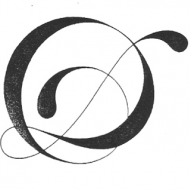

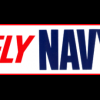

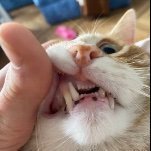
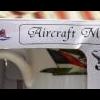

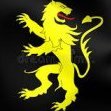
.thumb.jpg.b4a5069fd2c2dd5708ce1694345c5b11.jpg)
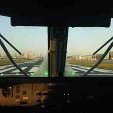
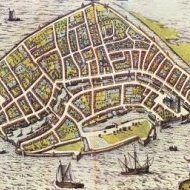
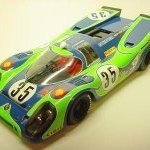
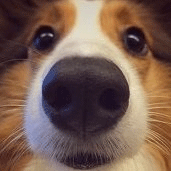


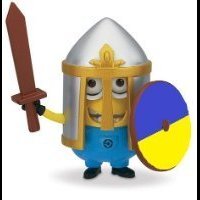
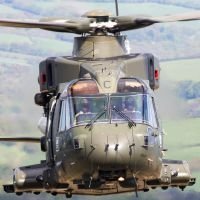
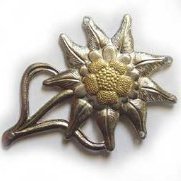
(510x640)-Copy(95x120).thumb.jpg.33073138e01aa81779639a845926753e.jpg)
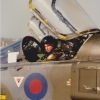

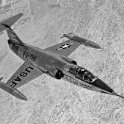
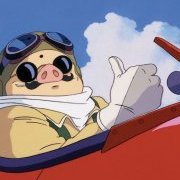
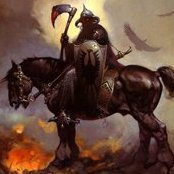

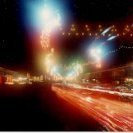

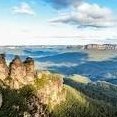
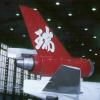

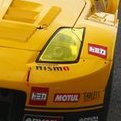
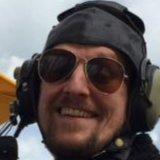
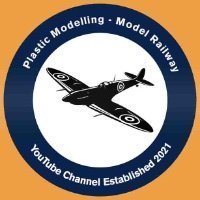
.thumb.jpeg.fcf185ed9c8c199cd9714bb7d9816b09.jpeg)
